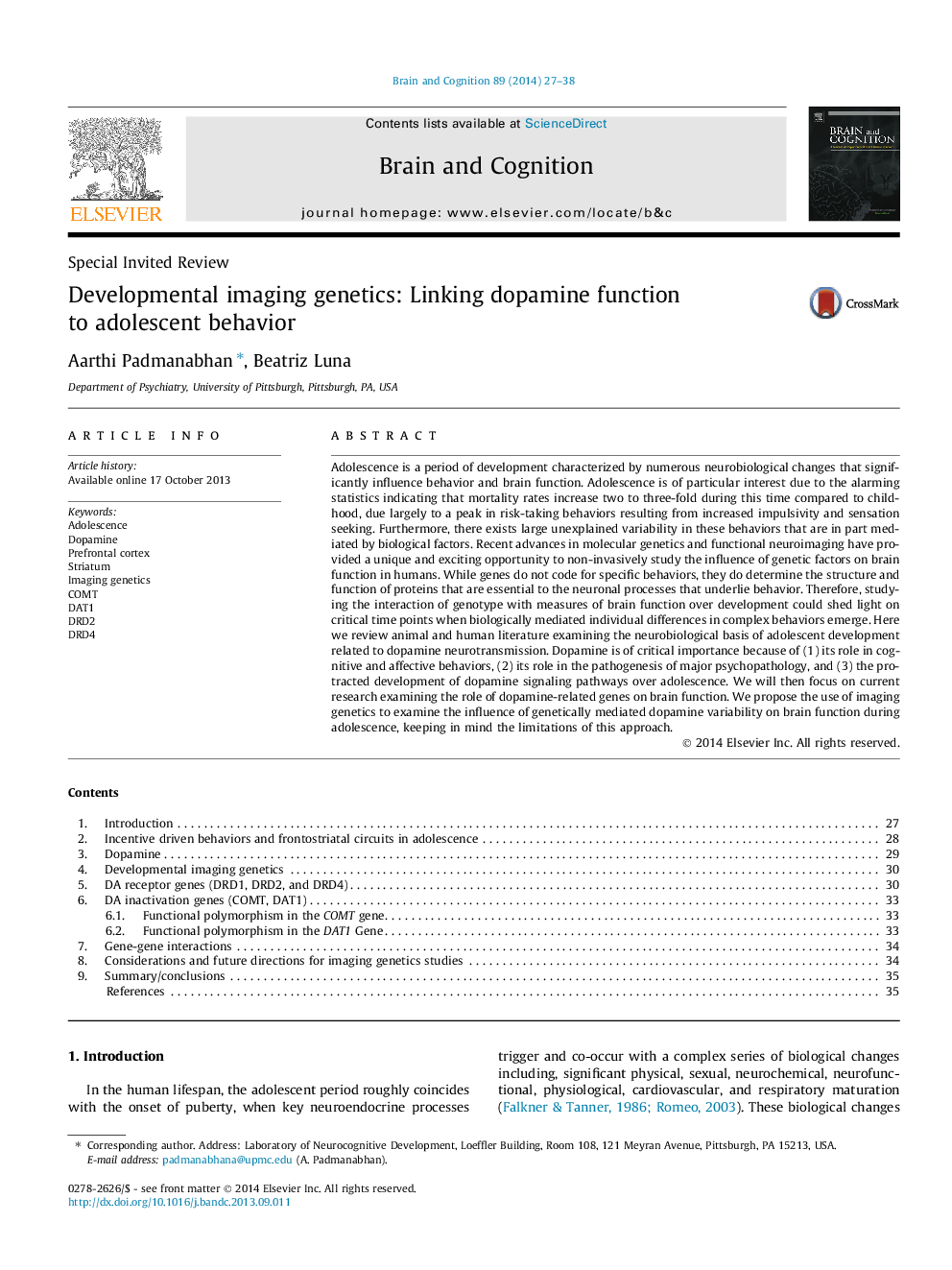| Article ID | Journal | Published Year | Pages | File Type |
|---|---|---|---|---|
| 924010 | Brain and Cognition | 2014 | 12 Pages |
•Frontostriatal systems underlying motivated behaviors are immature in adolescence.•The dopamine system undergoes significant reorganization over adolescence.•Imaging genetics can be used to study the biological basis of variability in brain function.•Imaging genetics may be a valuable tool to study the influence of dopamine in adolescence.
Adolescence is a period of development characterized by numerous neurobiological changes that significantly influence behavior and brain function. Adolescence is of particular interest due to the alarming statistics indicating that mortality rates increase two to three-fold during this time compared to childhood, due largely to a peak in risk-taking behaviors resulting from increased impulsivity and sensation seeking. Furthermore, there exists large unexplained variability in these behaviors that are in part mediated by biological factors. Recent advances in molecular genetics and functional neuroimaging have provided a unique and exciting opportunity to non-invasively study the influence of genetic factors on brain function in humans. While genes do not code for specific behaviors, they do determine the structure and function of proteins that are essential to the neuronal processes that underlie behavior. Therefore, studying the interaction of genotype with measures of brain function over development could shed light on critical time points when biologically mediated individual differences in complex behaviors emerge. Here we review animal and human literature examining the neurobiological basis of adolescent development related to dopamine neurotransmission. Dopamine is of critical importance because of (1) its role in cognitive and affective behaviors, (2) its role in the pathogenesis of major psychopathology, and (3) the protracted development of dopamine signaling pathways over adolescence. We will then focus on current research examining the role of dopamine-related genes on brain function. We propose the use of imaging genetics to examine the influence of genetically mediated dopamine variability on brain function during adolescence, keeping in mind the limitations of this approach.
